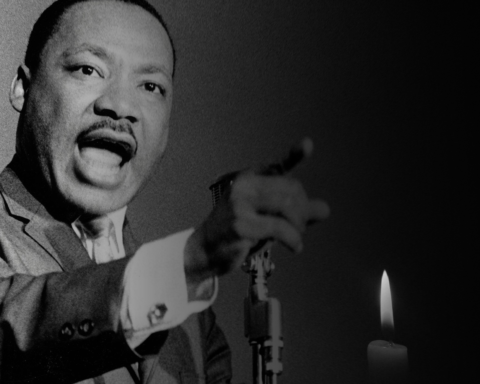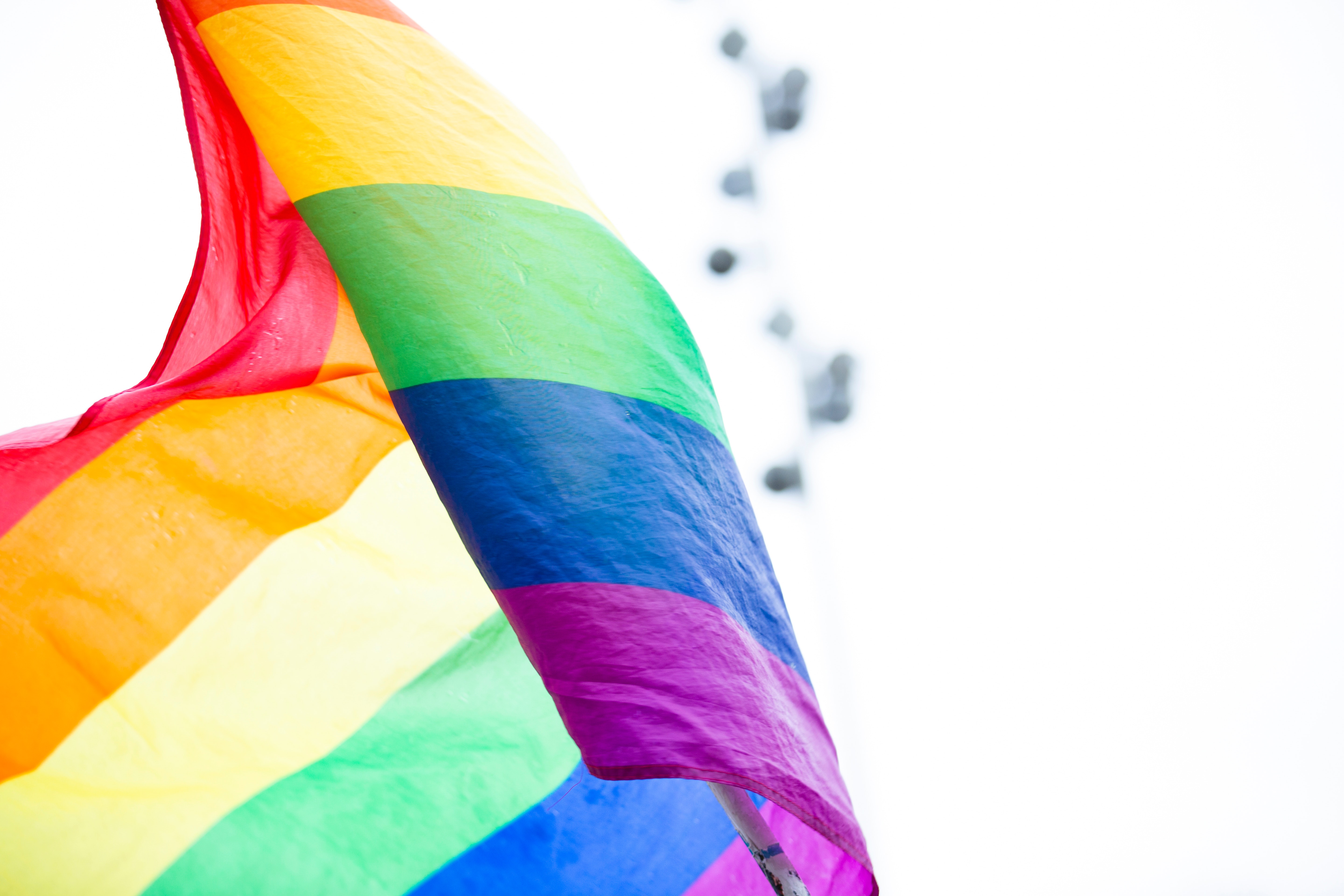Simmons College of Kentucky hosted “Philanthropic Redlining: The Illusion of Inclusion Part II” on Feb. 6th as part of The West Louisville Forum: Solutions for Urban America.

West Louisville Forum
Philanthropy is a loaded word. To understand why, we need to look back at the history of redlining in American cities.
The connection between redlining and philanthropy was discussed earlier this month by a panel of speakers that included Yvette Carnell, Antonio Moore, and Joshua Poe, and that was hosted by Dr. Kevin Cosby, President of Simmons College of Kentucky here in Louisville. What follows is a breakdown of what they discussed.
What is Redlining?
In short, redlining is economically enforced segregation.
The name comes from the literal practice of drawing red lines on urban planning maps to demarcate black neighborhoods. Banks and city governments colluded, so that Black Americans were denied access to mortgage loans in other neighborhoods.. Then, those communities were systematically isolated from resources, investment, and economic mobility.
Joshua Poe, an urban planner, has done research into the history of redlining in Louisville. Louisville is a strange case, first, because of the extreme extent of its redlining-driven neighborhood segregation, and second, because the targeted neighborhoods have largely flipped locations.
___________________________________________
“Louisville is so hyper-segregated that normal measures of segregation don’t apply.”
-Joshua Poe
___________________________________________
West Louisville used to be the location of several high-end neighborhoods when those neighborhoods were predominantly white, and now suffers from a lack of investment after white flight—accelerated by the 1937 Flood, which triggered a move away from the river and toward St Matthews and the Highland area on the east side.
Poe says that he has had to invent new ways of measuring segregation for his work, because “Louisville is so hyper-segregated that normal measures of segregation don’t apply.” One statistic stands out in illustrating this: 80% of the black folks in Louisville live on less than 5% of the land (i.e. in West Louisville).
The catch-22 of this situation for black Americans is that, for a long time, the best investment route of middle class America was home ownership. Yet, tied up with redlining was the assumption that black folks were “contagions to wealth” (as multiple panelists put it)—if and when black families ever did enter predominantly white neighborhoods, property values would fall and white flight would often ensue.
Philanthropic Discrimination
What does all this have to do with philanthropy? After all, isn’t charitable giving all about helping the needy? Wouldn’t that help black Americans if they’ve been cut off from access to wealth?

Actually, those assumptions do not hold, because of three things: extreme wealth inequality, discrimination in terms of philanthropic leadership, and the desire of donors to control where their money goes. As was written on one slide presented by Antonio Moore,
“Philanthropic discrimination is the under investment and neglect of Black led institutions for social change….fueled by explicit and implicit bias which falsely holds the notion that black led institutions are ineffective, inferior and fraudulent, and therefore unworthy of great philanthropic investment.
Philanthropic discrimination believes that if and when social change takes place in the black community it must be initiated and executed by white governed institutions”
In practice, philanthropy has not been a great transfer of wealth from wealthy white folks to needy black folks. The presenters pointed out that, even though black Americans face a higher rate of poverty and make up around 13 percent of the population (and a higher percentage of Americans in poverty) only 7-8% of “foundation funding” from philanthropy goes to people of color at all, and a miniscule 1% to the Black community.
Yet, because almost all of the built up wealth over time has been concentrated in the white population, “the majority of funding in philanthropy targeting Black communities comes through White-led agents of change.” So Black communities neither get an equitable share of philanthropic help, nor equal say in how best to allocate the resources they do receive.
Even though each voluntary giver may have good intentions, it adds up to black communities systemically receiving less than proportional access to those resources. In this way, philanthropy becomes a form of redlining.
The impact of progressive taxation vs. the philanthropy model.
The presentation also included several short videos about the recent billionaire-led “giving pledge”—in which all members pledge to give away at least half of their fortune by the time of their death, instead of passing it onto their heirs. Most notably, Warren Buffett and the Gates family have pledged to give away 99% and 95%, respectively.
Buffett and the Gates family each have done interviews in which they talk about wanting to do the most possible good with their money…with Buffett pointing out that, past a certain point, he already has everything he could want and his excess millions give him no utility. In each interview, it was made clear that at least for some billionaires, rising inequality is not something they support. Bill and Melinda Gates’ interview actually advocated for a wealth tax over an income tax—a change that would dramatically shift the tax burden onto billionaires and the top few percent of wealthy Americans.
The kind of massive redistribution that the Gates family and Buffet advocate through the Giving Pledge is clearly a good thing. And it certainly feels good to know that there are billionaires willing to voluntarily take that step. But the panel also demonstrated that there are good reasons to feel ambivalent about the whole thing.
When comparing massive philanthropic gifts to no transfer of wealth, of course generous billionaires look very good. But the fact is that recent decades have seen a dramatic decrease in taxes on the top few percent of wealthy Americans—and that, in part, is what has driven the massive increases in inequality.
Instead of billions in tax revenue, which can be democratically allocated to programs of social justice like SNAP, Social Security, and Medicare, that money has gone to billionaires and generated even more wealth for them. Yes, some of it may go to whichever charity projects a given billionaire chooses. But there is no credible basis for assuming that the charities prioritized by billionaires will be the ones that help the people with greatest need or the communities that have been historically neglected.
Of course, there is no guarantee that extra tax revenue would be allocated for socially responsible projects—and government does have its inefficiencies. But the reality of philanthropic redlining is that, as the statistics show, charitable giving skews toward white recipients—unlike SNAP and other programs that are mandated by law to serve populations according to need. (Again–only 7-8% of foundation funding goes to any people of color, even though Black Americans alone make up almost 13% of the population!)
Even the best-intentioned billionaires are going to feel motivated to follow their own intuition about where to give. And there is no reasonable expectation that billionaires’ desires will line up with the socially optimal targets of giving. As Yvette Carnell put it, ultimately, “I don’t need Warren Buffett to tell me [his opinions about philanthropy]. I need him to pay his taxes.”
___________________________________________
The takeaway is not that charitable giving is harmful—just that it has documented biases that make it an inherently insufficient means of seeking racially equitable outcomes. ___________________________________________
This does not mean to stop donating money!
The speakers were united in saying that this doesn’t mean charitable giving is without a place in the picture. Even with a very socially conscious tax plan in place, it would still be the case that individual gifts could and should make a huge difference. After all, just because white givers as a whole don’t think to give to causes like Historically Black Universities and Colleges (HBUCs) or to invest in black neighborhoods doesn’t mean they can’t.
The takeaway is not that charitable giving is harmful—just that it has documented biases that make it an inherently insufficient means of seeking racially equitable outcomes.
The tools we prioritize in the economy favor the white and the wealthy.
In spite of coming down in favor of higher taxes on the wealthy, the panelists did not write the government a blank check for their endorsement. They did note that, in many ways, bias is built right into the tax system.
For example, one mentioned Quantitative Easing (QE) as a mechanism of redlining. And—although the panelists didn’t actually go into the details of why that’s the case—QE is a great example of how a theoretically beneficial policy can increase inequality by simply overprioritizing the interests of the wealthy, so let’s get into the weeds here.
Quantitative easing (QE) is a monetary policy tool in which the Federal Reserve buys up government securities in order to release more dollars into circulation. (The Fed is able to do this without appropriating funds through Congress as part of its job in regulating interest rates and keeping prices stable).
___________________________________________
Any time the Fed lowers interest rates they are subsidizing investment—”investor welfare,” if you will.
___________________________________________
Although economists disagree somewhat about how effective quantitative easing is—economic intuition suggests that increasing the money supply, in the long term, should lead to inflation, not growth—QE has been used in Japan in the early 2000s to fight deflation (which can shrink the economy) and in the United States starting in late 2008 to mitigate the recession, with some success. In a context of already low interest rates, quantitative easing is one of the few tools available to the Fed in trying to prop up the economy.
Here’s why it is a social justice concern: of all the ways to stimulate the economy, quantitative easing is one of the most direct transfers of wealth from government coffers to wealthy investors. In fact, any time the Fed lowers interest rates they are subsidizing investment—”investor welfare,” if you will.
Although the Fed’s QE was separate from the bank bailout bill, both represented a huge transfer to wealthy folks. At the same time, the working poor and middle class were losing jobs and homes.
To me, it seems that the relevant question here is not whether the Federal Reserve, with its limited mandate, was right to use quantitative easing. The question we should be asking is why QE was so easily done to help wealthy investors, while implementing steps to help folks stay out of poverty was like pulling teeth. (It is worth noting that the Obama Administration did also manage to increase SNAP funding and increase the Working Families, Earned Income, and Child Tax Credits—which together kept millions of Americans above the poverty line).
The answer, of course, is that investors are organized around the issues important to them.
So, what can we do to help?
On an individual level, the simplest takeaway from the event—whether you’re black, white, or bear any other racial identity—was a reminder to actively support black-owned businesses. Perhaps our donation lists can include an under-supported HBCU or two, instead of further growing the already huge endowments of primarily white institutions.
The greater takeaway is that only so much good is ever going to be done by individuals acting on their own. The biggest step forward is to use this information to fuel our advocacy—and to inform our votes.
The toughest challenge and the greatest opportunity for social justice will always be organization. And that’s what it’s going to take to reverse the impacts of generations of segregation, discrimination, and both physical and philanthropic redlining.
For more information from the activists who led the panel, go to YouTube to follow both Yvette Carnell (https://www.youtube.com/channel/UCqD2av9L9M-AhXQhQE6JnjQ) and Antonio Moore (https://www.youtube.com/channel/UCfP8rCe_fAITriqI3UPYF0Q) or follow their Twitter handles, @BreakingBlack and @ToneTalks, respectively.
***
Author Bio: Henry Koenig Stone serves in Louisville, KY as current Managing Editor of Unbound and Associate for Young Adult Social Witness. Henry holds a B.A. in Economics (2015) from the University of Chicago and an MPP (2017) from UChicago’s Harris School of Public Policy.





Unbound Social